If you’ve recently built or bought a computer with colorful RGB (Red-Green-Blue) fans, you might be fascinated by the colors they can show. But what if you want to make them a different color? Changing the color of your RGB fans can make your computer setup more personal, but it might seem a little confusing, especially if you’re new to computers. This article will guide you through various methods to change the color of your RGB fans. While the methods largely depend on your PC’s model and build, we’ll keep things straightforward so you can understand how and if it’s possible to change the color of your RGB or ARGB fans.
Also see: ARGB vs RGB Fans: Controller, Header and Splitter
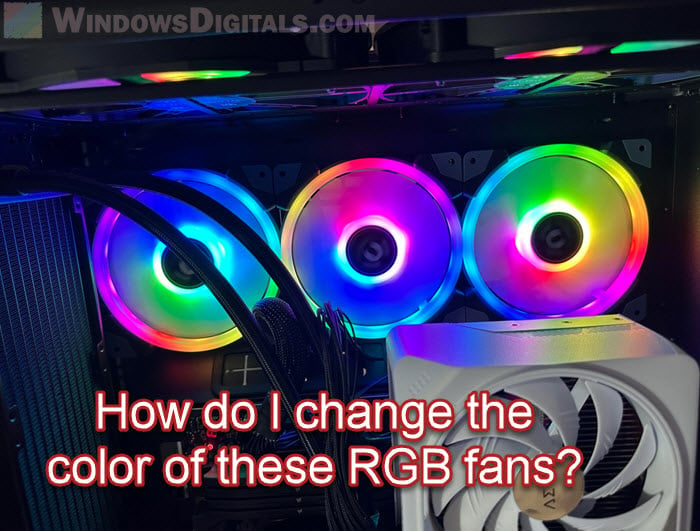
Solution 1: Using motherboard RGB software
One of the most common methods to control RGB fan colors is through software provided by your motherboard manufacturer. This approach varies depending on the brand and model of your motherboard. Here are some key steps for popular motherboard brands:
- First, determine the brand and model of your motherboard. This information is crucial as different brands have their own specific RGB control software.
- Based on your motherboard brand, download the corresponding software. For example, if you have an ASUS motherboard, you would use “Aura Sync” or “Armory Crate”. Gigabyte users would opt for “RGB Fusion”, MSI boards pair with “Mystic Light” or “Dragon Center”, and ASRock motherboards work with “Polychrome Sync”.
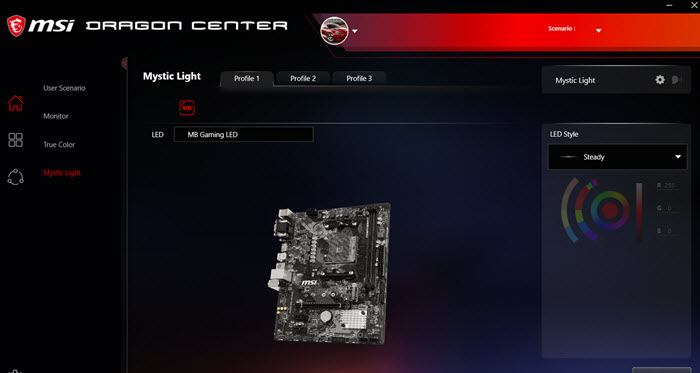
- After downloading, install the software and open it. The interface will typically show a diagram of your motherboard and connected devices, including RGB fans.
- Within the software, you’ll find options to change colors, effects, and patterns of your RGB fans. Some software allows synchronization with other RGB components for a cohesive look.
This method works best when your RGB fans are compatible with your motherboard and properly connected to the RGB headers. If your fans are not recognized by the software, double-check the connections or consider other solutions outlined in this guide.
Related concern: Can I Use 4-Pin Fans on 3-Pin Headers or Vice Versa?
Solution 2: Using a dedicated RGB controller
If your motherboard lacks RGB headers or you prefer a more manual approach, using a dedicated RGB controller is a viable solution. These controllers often come included with RGB fans or can be purchased separately. Here’s how to use them:
- Ensure your RGB fans are connected to the RGB controller. This usually involves simple plug-and-play connectors.
- Controllers can vary; some offer basic manual control with buttons directly on the unit, while others can connect to your PC for software-based control.
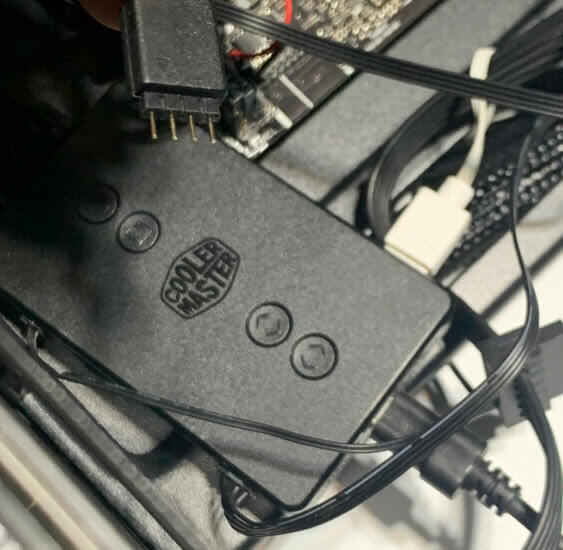
- If your controller is a simple manual type, it will typically have buttons to cycle through colors and effects. For example, some setups allow the reset button on the case to double as an RGB control button, cycling through presets each time it’s pressed.
- For controllers that connect to your PC, you’ll need to install the controller’s software. This software functions similarly to motherboard RGB software, offering a range of color and effect customization options.
- If your controller is manual and inside the case, consider its placement for easy access. Some users creatively position the controller outside the case or reassign case buttons for easier control.
Using an RGB controller is especially useful for systems where the motherboard does not support RGB customization or when you have multiple fans that exceed the motherboard’s RGB header capacity.
Useful guide: All Motherboard Slots and Connectors Explained
Solution 3: Utilizing third-party RGB software
Sometimes, the default motherboard software or the manual RGB controller might not offer the flexibility or compatibility you need. This is where third-party RGB software comes into play, providing a universal solution that often supports a wide range of hardware. However, it’s important to note that not all RGB fans are compatible with these software.
- Choose a reputable third-party RGB software. Popular choices include “SignalRGB”, “OpenRGB”, and “iCUE” from Corsair. These programs are known for their wide compatibility and range of customization options.
- After downloading your chosen software, install it and run the program. It will typically auto-detect connected RGB devices, including fans, but make sure your fans are properly connected to either the motherboard or an RGB controller.
- These programs offer extensive customization options, from color selection and brightness control to intricate lighting effects and synchronization across different devices.
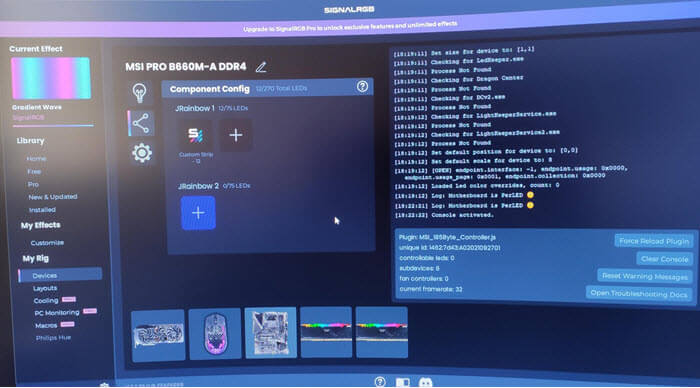
- If the software doesn’t detect your fans, check your connections, and ensure that any necessary drivers or additional software for your specific fans or controller are installed. Some fans might require specific adapters or connectors to be recognized by third-party software.
- Be mindful of potential conflicts if you have multiple RGB software installed (like your motherboard’s native app and a third-party one). In some cases, it’s better to stick with one program to avoid issues.
Third-party RGB software is particularly useful for those who have a mix of components from different manufacturers and want a unified control interface. It’s also a good solution if the native options don’t offer the level of customization you’re looking for. Please keep in mind that your RGB fans might not be compatible with such software.
Linked issue: Computer Fans Randomly Speed Up, Why?
Solution 4: BIOS settings for basic RGB control
For those who prefer to avoid software solutions or have issues with software compatibility, modifying RGB settings directly through the BIOS can be an effective alternative. This method is somewhat limited in customization options but is straightforward and often more stable. Note that not all motherboards include RGB control in the BIOS, and even those that do may not offer comprehensive support for all types of RGB fans.
- Restart your PC and enter the BIOS settings. This is usually done by pressing a specific key during boot-up, like F2, F10, or Del, depending on your motherboard.
- Once in the BIOS, navigate to the section that controls RGB. This might be under “Advanced” settings or a dedicated “RGB” or “Lighting” section. The exact location and naming convention will vary depending on the motherboard.
- Within this section, you’ll find basic options to control the RGB lighting of compatible devices, including fans. You can usually select colors and perhaps a few effects, though the options will be more limited compared to dedicated software.
- After making your adjustments, save your changes and exit the BIOS. Your settings should take effect immediately upon rebooting.
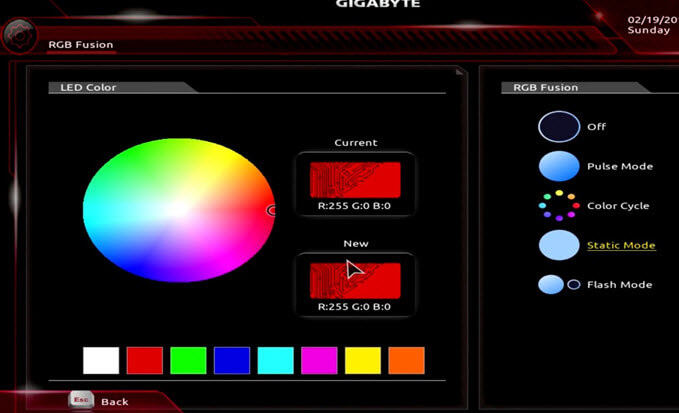
Using the BIOS for RGB control is a reliable way to set a basic color scheme, especially for those looking for a “set it and forget it” solution without additional software. However, keep in mind that it offers less flexibility compared to software-based methods.
Relevant problem: Why Are My PC Case Fans Not Spinning?
Solution 5: Using the case’s built-in button
Many modern PC cases come equipped with a built-in button specifically for controlling RGB lighting. This is a convenient option for those who prefer a straightforward, no-software approach. Here’s how to make use of this feature:
- Typically, this button is situated on the front panel of the case, often near the power and reset buttons. Its design can vary, but it’s usually labeled or identified with an RGB-related symbol. Some cases in series such as the Cooler Master MasterCase, the NZXT H series, and Corsair iCUE cases feature an RGB button. Please refer to your case’s or PC’s manual for specific details.
- The built-in RGB button generally allows you to cycle through various colors and lighting effects. Each press of the button changes the color or effect, offering a simple way to customize the look of your RGB fans.
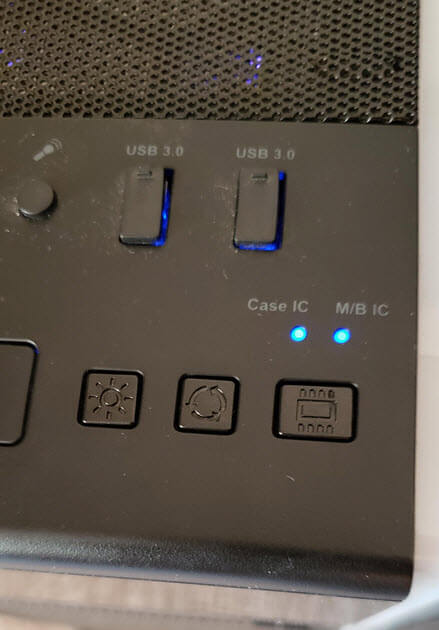
- In some setups, the case’s reset button might double as the RGB control button. Pressing this button cycles through the RGB modes. This setup is particularly common in cases where a separate RGB button isn’t provided.
- While convenient, this method offers less flexibility compared to software solutions. The range of colors and effects will be limited to what’s pre-programmed in the case’s RGB controller. However, for many users, this range is sufficient for basic customization.
- One of the biggest advantages of using the case’s built-in button is the lack of any additional setup. There’s no need to install software or configure settings. It’s a plug-and-play solution that works as soon as your system is up and running.
Might be useful: What Are The Different Types of PC Cases?
Concluding thoughts
Changing the color of RGB fans in your computer really comes down to knowing what you’re working with. First, figure out the make and model of your fans, or if you have a pre-built PC, know its brand and model. This is important because different fans and PCs often need specific software or a certain type of hardware controller to manage the RGB lighting. It’s not a one-size-fits-all situation; each setup might have its own unique way to change those eye-catching colors.
So, start by doing a little digging into your system’s details. Once you’ve got that sorted out, you can choose the best approach, whether it’s using a software program, a manual controller, or just a simple button on your case. Remember, getting those lights to shine just the way you want might take a bit of effort, but it’s all about finding the right tool for your particular setup. With the right information in hand, you’ll be well on your way to customizing your PC’s look to match your style.
Frequently Asked Questions
Can I control the RGB colors of my fans if my motherboard doesn’t have RGB headers?
Yes, you can use a dedicated RGB controller for this purpose. These controllers often come with RGB fans and allow you to change colors and effects manually or through controller-specific software.
What should I do if the RGB software doesn’t recognize my fans?
Ensure the fans are correctly connected to either the motherboard or an RGB controller. Also, check if there are specific drivers or adapters required for your fans to be recognized by the software.
Is it possible to synchronize the RGB fans with other components in my PC?
Yes, most RGB software, whether it’s motherboard-specific or third-party, offers synchronization options to match the lighting across different components.
Can I change RGB fan colors without software?
Yes, some simpler RGB controllers use manual buttons to change colors and effects. Additionally, some motherboards allow basic RGB control through BIOS settings.
Are all RGB fans compatible with all motherboards?
Not necessarily. Compatibility depends on the RGB connector types (like 3-pin ARGB or 4-pin RGB) and the motherboard’s support for these standards. Always check compatibility before purchasing.
What’s the difference between ARGB and RGB fans?
ARGB (Addressable RGB) fans allow for more intricate and individual lighting control of each LED, whereas RGB fans typically change colors uniformly across all LEDs.
Will changing RGB fan colors impact my PC’s performance?
No, changing RGB fan colors is purely aesthetic and has no impact on the performance of your PC.
If I have fans from different brands, what’s the best way to control their RGB?
Third-party RGB software that supports multiple brands is usually the best option for controlling fans from different manufacturers in a unified manner. However, it’s important to note that not all fans are compatible with these types of software.
